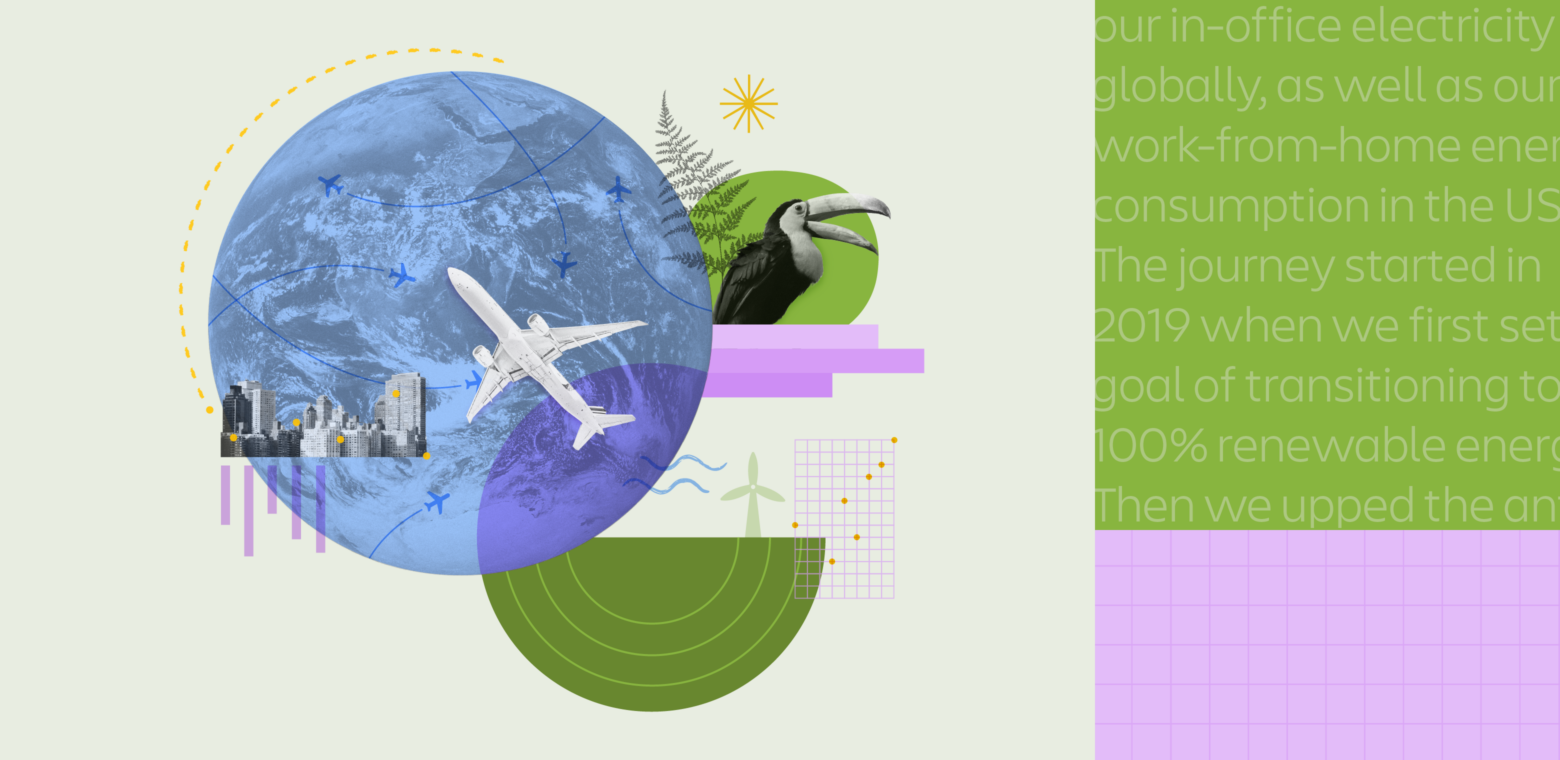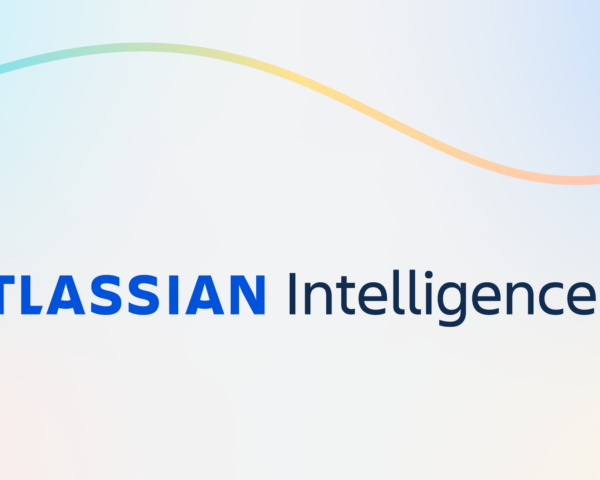Integrating social and environmental progress into everything we do is a worthy ambition. But evolving the way you operate a business is easier said than done, as anyone working in the sustainability space knows all too well.
Reaching our milestones requires perseverance, innovation, and most of all, partnership. By bringing teams together, we were able to launch Responsible Tech Principles alongside Atlassian AI; land our first US Virtual Power Purchase Agreement (VPPA); and share the results of our first pay equity audit. (That’s alongside all the other “business as usual” work we did in the past year.)
Here’s how we overcame the challenges we faced with each of these initiatives, along with a few lessons other teams working on sustainability initiatives can apply to their own work.
VPPA: aligning priorities to smooth the runway
This year we signed our first virtual power purchase agreement, which will offset our in-office electricity use globally, as well as our work-from-home energy consumption in the US. VPPAs actually go beyond offsets because they allow us to pool resources with like-minded organizations and fund renewable energy projects that 1) none of us could fund alone; and 2) need outside funding to get off the ground.
The only catch is that they require a long-term commitment. Sustainability efforts have incredibly strong support across Atlassian. But as a company that values agility, our execs and accountants generally prefer to keep budgets flexible. Could we find a way to make this work?
To untangle this knot, we recruited partners from Atlassian’s Treasury and Financial Planning & Analysis teams. They worked with us on the modeling and risk assessment needed to figure out a way forward.
The biggest favor we did ourselves was to get the sustainability and financial priorities aligned at the outset. Once we agreed to optimize for simplicity and flexibility, two key decisions fell into place: we’d choose a “fixed-price VPPA” rather than a type of VPPA where we consume the power ourselves (which is more complicated); and we’d opt for the shortest available commitment, ten years.
Throughout the project, most discussions happened in small groups using Slack, then were summarized on Confluence pages for members of the larger team to review if they chose. This helped control the signal-to-noise ratio in our daily communications. Leads from Sustainability and Finance also met monthly to work through any open questions in real time, which let us get the sticky issues resolved without an overly burdensome meeting cadence.
Up next? Business travel. As a fast-growing company, our travel emissions have surpassed pre-pandemic levels. We’ll use the same methods again to solve this conundrum: work across department lines; communicate just enough and just to the right people; and make space for real-time problem-solving.
Pay equity: getting started, then getting out of the way
As part of our sustainability program’s “People” pillar, Atlassian is committed to treating employees equitably. Naturally, compensation is a big part of that. So we conducted our first pay equity audit with the help of an outside vendor. (Definitely not an area where we should grade our own homework!) We found no statistically significant gaps in compensation along gender lines globally. And in the US, where we have access to additional demographics, no significant gaps along racial lines.
Because the audit was part of the DEI team’s strategy, they owned the workstream by default. But we realized along the way that any changes prompted by this (or future) audits would fall to the compensation folks, which we call the Total Rewards team. DEI is really more of a contributor and advisor here, so we needed to move over and let Total Rewards take the wheel.
To transition ownership of the pay equity workstream to them, we…
- Started with buy-in. It wasn’t a tough sell, really. Their team has deep expertise in pay audits and even owns a department-level OKR around pay equity and explainability. It made sense for them to own the whole workstream going forward.
- Established new points of contact for our audit vendor. Our compensation managers participate in a yearly compensation planning cycle and rely on audit data to inform any adjustments. They now have a direct line of communication with the vendor.
- Transferred knowledge. Our DEI team advised Total Rewards on the groups and demographics we should evaluate.
- Transferred accountability. Total Rewards assumed ownership of the O (objective) “Increase explainability and equitability across the design and delivery of our ongoing compensation programs” and the KRs (key results) nested underneath.
Now we can use the muscle memory we gained in establishing the partnership with Total Rewards as we continue embedding bias mitigation in every aspect of our HR game. We’re already working closely with the Talent Acquisition team to do this in our recruiting and hiring practices, as well as the broader Talent team.
Responsible AI: smashing silos to meet an unrelenting deadline
One of Atlassian’s company values is “Don’t #@!% the customer,” which sums up how we think about the ethics of tech. That’s why we began developing a set of guiding principles that reflects our commitment to human rights some time ago.
Then generative AI exploded onto the scene and our R&D teams began baking these new advances into our products. Establishing responsible technology principles to guide development suddenly went from “nice to have” to “incredibly urgent.” We didn’t want to include generative capabilities in our products without also sharing how we hold ourselves accountable when it comes to privacy, reliability, ethics, and evolving regulation. And the new AI features were to be announced publicly in just two months. It was time to step on the gas.
People across various teams were already working to understand AI as a potential risk area for human rights, as well as the changing regulatory implications from a policy and privacy perspective. These folks came together in cross-functional working groups.
The working groups re-prioritized to make more space for this project, which sped things up to the point where we were able to stress-test the principles as well. We put the word out that anyone interested was welcome to review drafts of the principles and provide feedback. People from all over the company stepped up, offering input on everything from technical specifics to voice and tone.
It brought a lot of cooks into the kitchen, but the level of buy-in we got from making the process so open and participatory was worth it. Not to mention the fact that showing our drafts to a wide range of folks made the final product more comprehensive and clear.
In the end, the working group launched Atlassian’s Responsible Technology Principles alongside our AI announcement as we’d hoped. Not only that, but we were able to help our teams evaluate new engineering work against these principles. Thanks to cross-functional teamwork, we’re building responsibly from the outset.
With the guidance now in place, the next step is to further integrate these principles into our day-to-day work, particularly our R&D teams. With 11,000 employees, that’s a big task. But knowing we can lean on people from every corner of the company for support makes it feel feasible.
. . .
If there’s one thing we’ve learned this past year, it’s that by working together as one Atlassian team, we can accomplish things that would be impossible alone. And honestly? We all need that reminder.
Sometimes working in the sustainability space feels very lonely indeed. We fight uphill battles for budget and staffing. We’re inundated with climate- and human rights-related headlines that are deeply concerning, if not outright depressing. We wonder whether the blood, sweat, and tears we pour into this work make any difference at all.
But it does make a difference. And we’re not alone. In fact, we’re surrounded by colleagues who support the cause. Sometimes it feels scary to ask them for help or (gulp) let them take the wheel. But when we do, the impact we have is so much bigger.












































